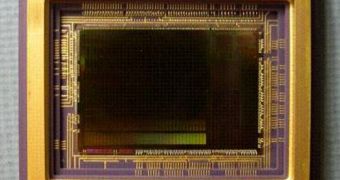Rather than waiting until 2014-2016 to benefit from the advancements that modern technologies would bring in the field of orbital telescope-based space exploration, scientists and engineers working on the planned James Webb Space Telescope have decided to outfit Hubble with one intricate piece of future hardware. That will be installed on the venerable observatory during one of the five spacewalks that the seven astronauts of the space shuttle Atlantis STS-125 mission will perform during their 11-day mission to service the 17-year-old Hubble.
The telescope's Advanced Camera for Surveys (ACS) will be the main beneficiary of the new technology, a specialized integrated circuit known as an Application-Specific Integrated Circuit (ASIC). The small chip contains the entire electronics of a very large circuit board in just a tiny package, and will be a part of the new Charge-Coupled Device (CCD) Electronics Box (CEB) on Hubble. The fresh CEB will replace the old version, which stopped functioning a while ago.
The ASIC is taken directly from the designs of the JWST, but is slightly adapted to meet the existing telescope's operating conditions and functioning temperatures. While the future observatory will run at extremely low temperatures, close to absolute zero, Hubble does not require that level of chilling for it to operate within parameters. The first ASIC components were tested on the University of Hawaii's (UH) 2.2 meter telescope on Mauna Kea, Hawaii as far back as 2007, and results proved that the system functions flawlessly.
Recently, Hubble got another boost, this time from the Earth. The intervention has facilitated the use of an observational technique known as high-precision polarimetry, which is regularly used by astronomers to identify scattered light emitted by active galactic nuclei and early planets forming around their still very young stars. The Space Telescope Science Institute has funded the new work, whose details are published in the February issue of the journal Publications of the Astronomical Society of the Pacific.
“We've been able to take an existing camera and carefully plan some observations, which have allowed us to enable a new type of science to be done without having to go up to the telescope to put a new instrument in. So for a very small cost, we've been able to expand the science that the Hubble Space Telescope can do,” said associate research scientist Dan Batcheldo, an expert from the Chester F. Carlson Center for Imaging Science, at the Rochester Institute of Technology.

 14 DAY TRIAL //
14 DAY TRIAL //